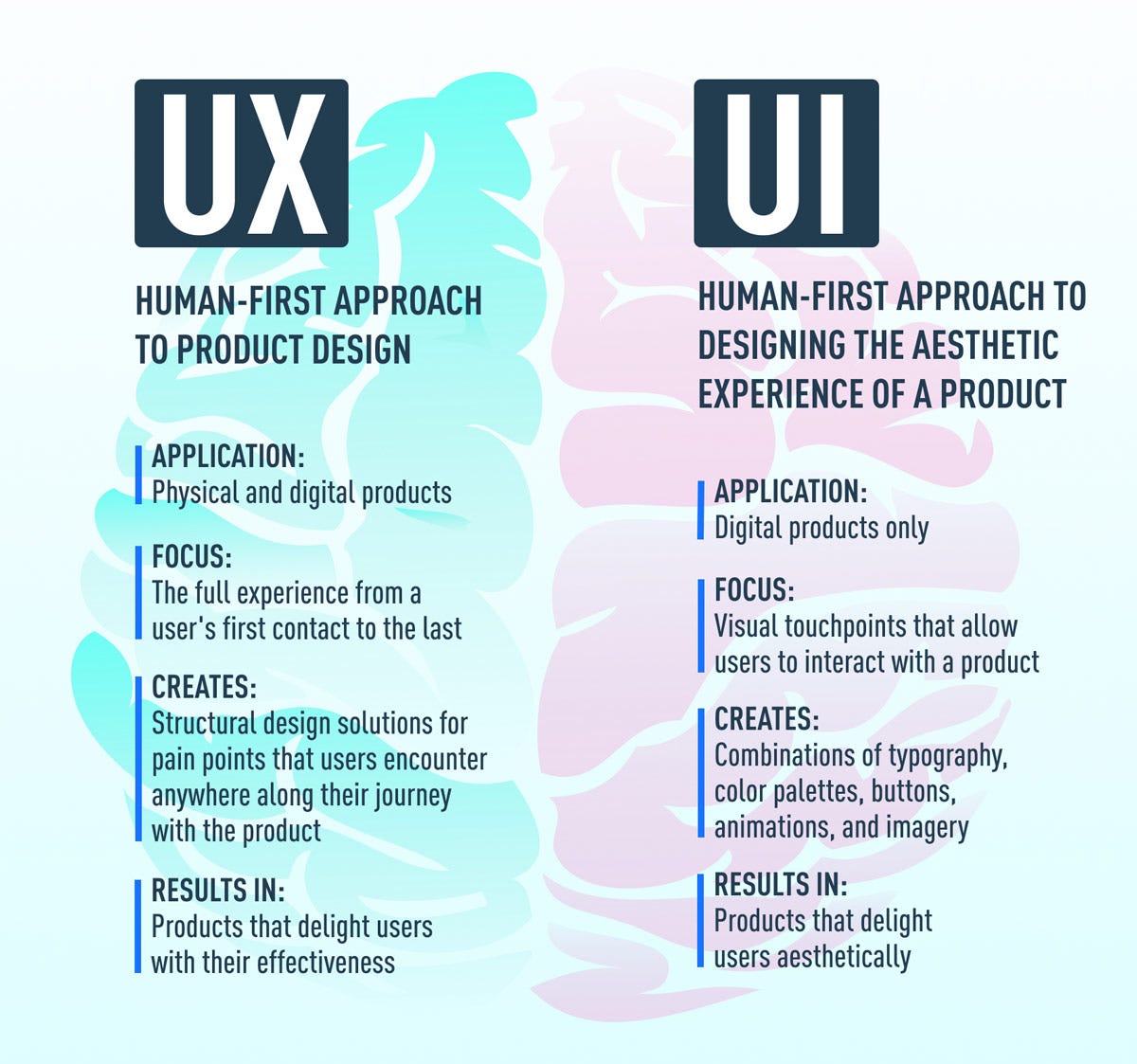Don't Skimp on UX/UI Design
Don't make the mistake of not putting your users front and center when designing a product.
Imagine someone has just received a new wearable device. This wearable has novel, innovative capabilities. From a tech perspective, it’s amazing. The excited user opens up the device’s app to pair their wearable and they are met with this kind of user interface: The images are blurry, the font too small to read. The information displayed has spacing issues and feels clunky. They notice typos. There’s a lot of data displayed but they don’t understand what it all means. It feels like too much information and not enough at the same time.
How do you think the user might feel?
Confused, frustrated, overwhelmed, disappointed?
How might this experience affect their feelings about the device?
You can just imagine that this user might have a lower sense of satisfaction with the product overall. They might mentally disengage, driving lower product use and decreased retention. They may regard the company as being unprofessional and not in tune with their users. They may return the device, or at the very least not review it positively or refer it to others. If they are actively frustrated, they may even review the product negatively and warn others not to use it. The new company has just lost market traction because of their early adopters’ experiences.
Turns out, a product’s user interface (UI) and overall user experience (UX) is more important than many realize.
Unfortunately, the scenario above occurs quite often. It usually happens when UX/UI is an afterthought. Maybe the founders are highly technical and aren’t aware of its importance. Maybe there’s an underestimation of how complex good design is and what specialized design knowledge even looks like. Maybe the company’s resources are very limited and they prioritize core functionalities over UX/UI design, so they ask the software developer(s) to design the UX/UI. (Very rarely are these people experts in both software development and UX/UI design—that would be a unicorn developer, for sure.)
Sometimes, there's a belief that the product is good enough to overcome any UX/UI shortcomings, especially if it meets a unique need or is first to market. This overconfidence can lead to neglecting the user experience until user feedback or poor adoption rates are so bad that the problem becomes clear—sometimes when it’s too late and the product has already developed a poor reputation.
Often, I think the people involved in the day-to-day development of the app are so entrenched in the product that it becomes difficult for them to see issues that seem glaringly obvious to others.
So how can you make sure this doesn’t happen to your company?
Conceptualization phase: Involve a UX/UI design professional from the start to ensure the product is user-centered. After all, these are the people for whom you are creating the product, right?
Design phase: Integrate expert UX/UI designers to create the interface and interaction flows, ensuring they are optimized for the unique characteristics of the product such as that specific wearable and the target population.
Prototype/beta phase: Hire UX/UI researchers to conduct real user testing and interpret feedback effectively. Then iterate on the product respectively. If you’ve made major changes, it might be worth it to conduct a second round of UX/UI research to ensure you hit the targets and that nothing additional pops up.
Post-Launch: Continuously work to improve the product and app based on user feedback and evolving UX/UI trends. Continue involving design experts to enhance and update the app's design over time.
Quick tip: UX/UI designers are not the same as UX researchers. Sometimes they can be, but don’t expect it. Think of it this way: designers create the UX/UI for the users; researchers carry out studies to find out whether the UX/UI is hitting the mark.
👋 I'm Lydia Roos, health psychologist and Founder of EvolveWell Research Partners.
📌 EvolveWell offers consulting and research services for mental and physical health, wellness, and fitness companies. [evolvewellresearch.com]
📩 Need help with finding UX/UI design experts or conducting UX/UI research? Get in touch via email or LinkedIn.




